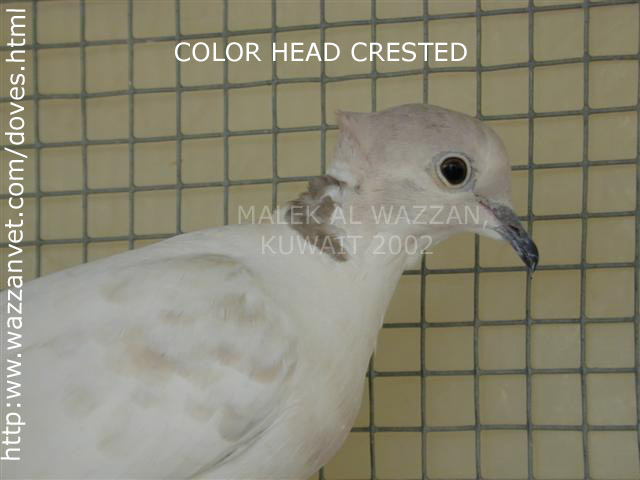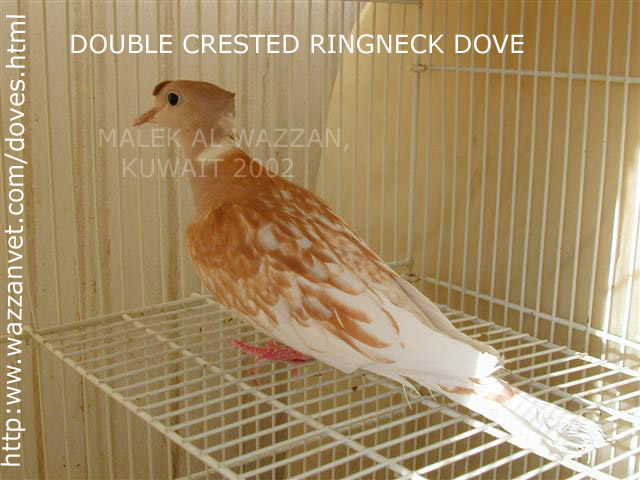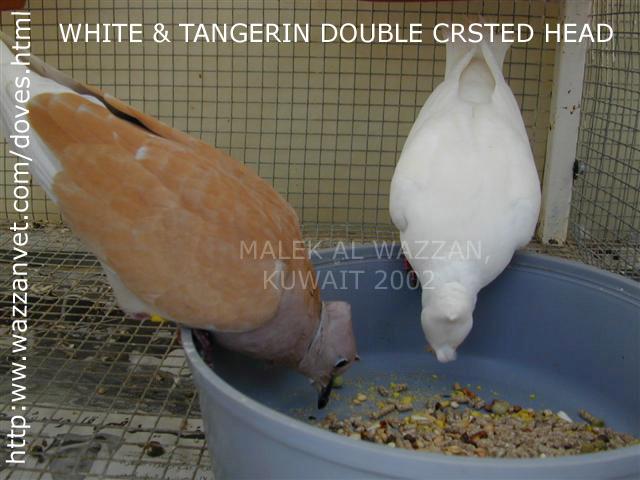
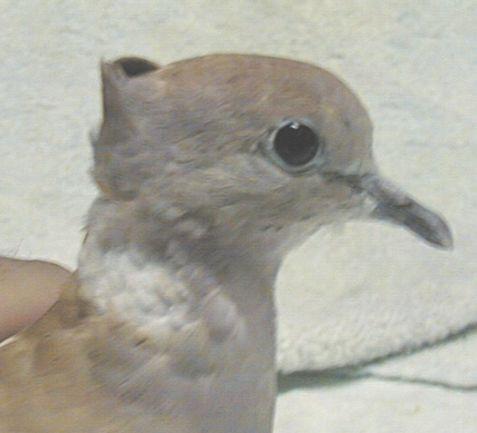
Orange ©John Pire Tangerine Pearled
Crested
cr


Orange ©John
Pire
Tangerine Pearled

©John Pire
Tangerine Crested


©Jeff Downing
©John Pire
Wild Type Crested

©John Pire
Note: the orange-yellow iris coloration
This mutation was recently imported into the US (2002). The
"crest" is at the back of the head. Can be found in any of the known colors.
Genetics are currently beginning, here in the US now that this mutation has been
imported. It is believed the gene is recessive & is showing to be recessive.
Of interest; the male's "posturing" towards a hen is somewhat
different then in the more common "risoria". It seems to be a
bit more towards what I have seen in the Vinaceous Ringdove display. Their body is more
rigid during the "strut" & tail is fanned when the male
"postures" or courts a hen. In doing some research with the young from
the imported birds, I have found the iris coloration to be different then the US "risoria"
in the Wild Type, Tangerine, Tangerine Pearled & Orange. The Crested has a more orange-yellow iris color, whereas
in the US "risoria" the iris color is a red/brown or chestnut
brown/red. This different iris coloration should be noted & incorporated
into their description. The Crested will be bred to the US "risoria"
& this orange-yellow iris coloration may disappear all together. See the
Coloration Comparison
The genetic symbol (cr) has been voted upon & approved the the ADA Board 10/2005.
IDS congratulates the fancier for importing this mutation and allowing fanciers to obtain some young produced from the imported birds. The birds in these pics are juvenile yet & the "crest" may change when they attain adult plumage. There may be variation in the size & shape of the "crest feathers".
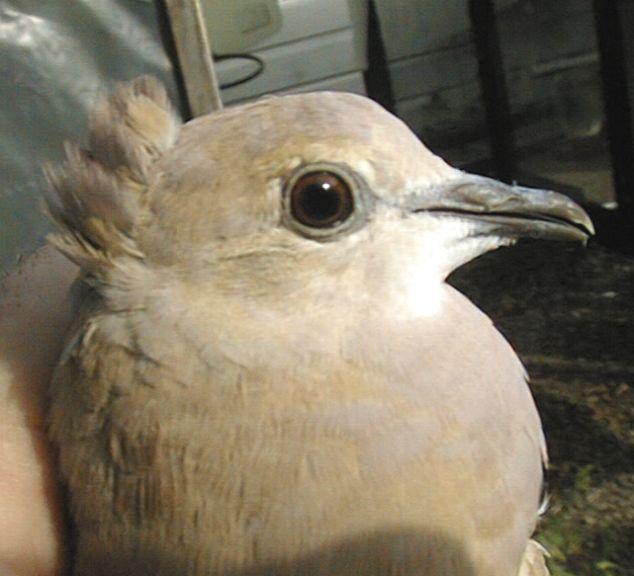
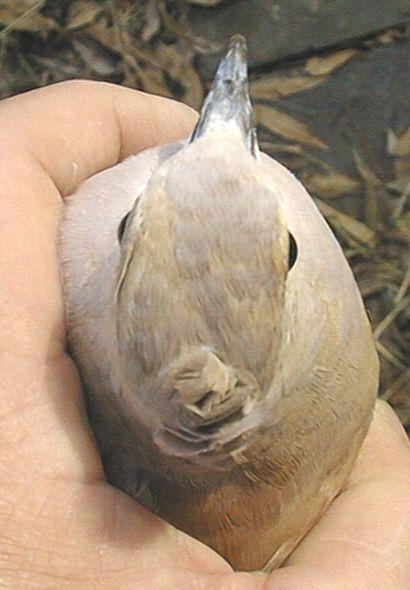
©John Pire
Tangerine - showing "crest" (side & top views)
![]()

©Fred Quimbo - Philippines
The picture above of the Blond Crested Ringneck is probably a bird
directly from the area of the mutations' origin which is on an island between
the Philippines & Thailand. Fred obtained four birds from a bird dealer in
his country - two Blond Crested & two Blond non Crested. Any one with
information on this mutation & it's place of origin please contact IDS.
IDS8381@aol.com
![]()
Below is the information from Malek al
Wazzan from Kuwait
"Crested Ringneck Doves , This mutation
origin is in south east Asia in Island between Philippine and Thailand as
natural mutation occurred in by the creation of this bird. This Bird is Been
imported in 1990 to Kuwait, Genetics are beginning on this mutation with its
importation. it was in the 3 colors white, fawn and Ivory. Dr.Miller who
have helped me with the basic in the Crosses of colors mutation after
importing all his colored birds 1992 -1993, I have proven for the
1st time 1993 that the Crested Ringneck Doves is Recessive mutation,
and I crossed the imported Ringneck Doves new colors, and made the
crested fawn color which was the only color I have back in 1991 to be for
the 1st time in all the new colors I have imported from the US, most of
the birds now in the US is imported from Kuwait are the latest
generation out from Dr. Miller birds Normal head of 92 - 93 and my
crested fawn bird which to Kuwait.
I have wrote many articles in ADA & CDA and the American Pigeon Fancier in
93 - 95.Also promoted the birds photos in the NYBS in Kentucky in Oct 1994, I have exported in 96 some of the crested birds to Holland to Mr. H van Grouw, I
been as well Dr.Miller in his Dutch articles in the Onz Vogel's magazine in
Holland, so this was the 1st time in Europe, and I have send some this year
to Mr.Fred in Belgium the president of the Doves Club.
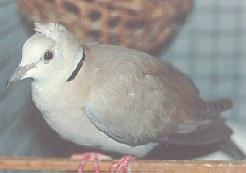
©Malek al Wazzan
Malek sent the 3 pictures below showing the crested & the "double crested" (Tufted & Crested) & included some of his data. In his experience with the "crest" X tufted": the crest & tufted genes were recessive in the 1st generation of young. the 2nd generation of "double crested" (Tufted & Crested) are producing the visual effect o f the Tufted & Crest on the same bird.
